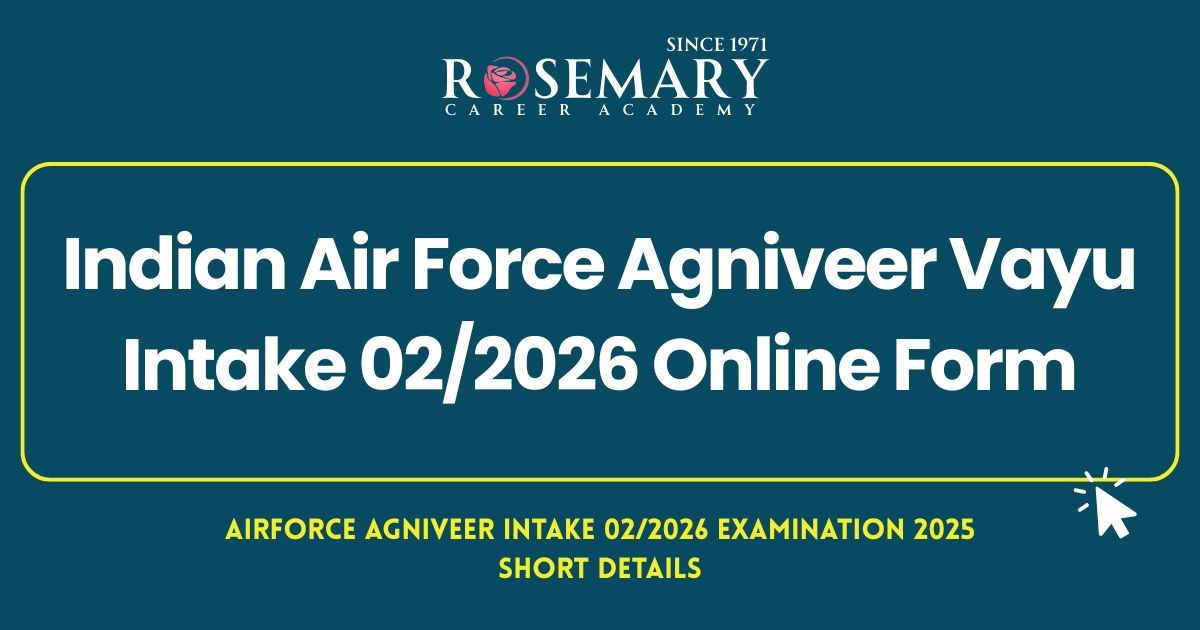JEE Advanced Syllabus 2025, Check Subject-Wise Important Topics, Weightage
JEE Advanced Syllabus 2025 : Candidates can check JEE Advanced Syllabus 2025 here. The syllabus includes important topics from Physics, Chemistry, and Mathematics.

JEE Advanced Syllabus 2025 is updated in this article. Candidates can check JEE Advanced Syllabus 2025 for Physics, Chemistry, and Mathematics here. The important topics, topic-wise weightage is given here. Candidates who wish to appear in JEE Advanced 2025 exam must qualify JEE Main 2025 exam. The top 2,50,000 JEE Main 2025 qualified candidates will be allowed to appear in JEE Advanced 2025.
JEE Advanced Syllabus 2025 for Physics
JEE Advanced Physics Syllabus 2025 includes various topics such as General, Mechanics, Thermal Physics, Electricity and Magnetism, Optics, and Modern Physics. Candidates can check the chapter-wise included topics in the table below.
| Chapter | Topics |
|---|---|
| 1. General | Units and dimensions, dimensional analysis; Least count, significant figures; Measurement and error analysis: Vernier calipers, screw gauge (micrometer), simple pendulum, Searle’s method, calorimeter, focal length (u-v method), resonance column, Ohm’s law, meter bridge, post office box. |
| 2. Mechanics | Kinematics (1D & 2D), projectiles; Uniform circular motion; Relative velocity; Newton’s laws; Friction; Work, Energy, Power; Conservation laws; Centre of mass; Impulse; Collisions; Gravitation, satellite motion, escape velocity; Rigid body, torque, angular momentum; Rolling; SHM (linear & angular); Hooke’s law; Fluids (Pascal, Bernoulli, viscosity, etc.); Waves, resonance, beats. |
| 3. Thermal Physics | Thermal expansion; Calorimetry; Conduction, convection, radiation; Newton’s law of cooling; Ideal gas laws; Specific heats (Cv, Cp); Isothermal & adiabatic processes; First law of thermodynamics; Blackbody radiation, Kirchhoff’s law, Wien’s law, Stefan’s law. |
| 4. Electricity & Magnetism | Coulomb’s law; Electric field, potential, flux; Gauss’s law; Capacitance, dielectrics, series & parallel capacitors; Energy in capacitor; Current electricity; Ohm’s law, series & parallel resistors; Kirchhoff’s laws; Wheatstone bridge; Meter bridge; Potentiometer; Heating effects; Biot–Savart law; Ampere’s law; Magnetic field due to current; Force on current-carrying wire; Torque on loop; Magnetic dipole; Earth’s field; Magnetic properties of materials. |
| 5. Electromagnetic Induction & AC | Faraday’s law, Lenz’s law, self and mutual inductance; RC, RL, LC circuits; AC circuits, impedance, phasor diagrams; Power in AC, resonance. |
| 6. Electromagnetic Waves | Displacement current; Electromagnetic wave equation; Characteristics of EM waves; Electromagnetic spectrum. |
| 7. Optics | Ray optics: Reflection, refraction, Snell’s law, total internal reflection; Lenses & mirrors, image formation, combination of lenses, magnification; Optical instruments.Wave optics: Huygens’ principle, interference (Young’s double slit), diffraction, polarization (by reflection & transmission), Brewster’s law. |
| 8. Modern Physics | Dual nature of matter & radiation, de Broglie waves; Photoelectric effect; Bohr’s model, energy levels, hydrogen spectrum; X-rays: production, properties; Semiconductors: Intrinsic & extrinsic; Diodes, transistors, logic gates (AND, OR, NOT); Alpha, beta, gamma decay; Mass–energy relation; Nuclear binding energy; Fission & fusion. |
JEE Advanced Syllabus 2025 for Chemistry
JEE Advanced Chemistry Syllabus 2025 includes various topics such as Gaseous and liquid states, Atomic structure and chemical bonding, Chemical equilibrium, Chemical kinetics, Surface chemistry, Preparation and properties of the following compounds, Preparation, properties and reactions of alkenes and alkynes, etc. Candidates can check the chapter-wise topics in the table below.
JEE Advanced Physical Chemistry Syllabus 2025
The Physical Chemistry section of JEE Advanced 2025 includes Gaseous and liquid states, Atomic structure and chemical bonding, Energetics, Chemical equilibrium, Electrochemistry, Chemical kinetics, etc. Candidates can check the sub-topics included in Physical Chemistry below.
| Chapter Name | Topics |
|---|---|
| General Topics | Concept of atoms and molecules; Dalton’s atomic theory; Mole concept; Chemical formulae; Balanced chemical equations; Calculations based on mole concept (oxidation-reduction, neutralisation, displacement); Concentration: mole fraction, molarity, molality, normality. |
| Gaseous and Liquid States | Absolute scale of temperature; Ideal gas equation; Deviations: van der Waals equation; Kinetic theory: average, RMS and most probable velocities and relation with temperature; Law of partial pressures; Vapour pressure; Diffusion of gases. |
| Atomic Structure & Bonding | Bohr model; Hydrogen spectrum; Quantum numbers; de Broglie hypothesis; Heisenberg uncertainty principle; Shapes of orbitals (s, p, d); Electronic configuration (Z ≤ 36); Aufbau principle; Pauli’s exclusion principle; Hund’s rule; Orbital overlap, covalent bond; Hybridisation (s, p, d); Molecular orbital diagrams for homonuclear diatomic species; Hydrogen bond; Dipole moment; VSEPR theory & molecular shapes. |
| Energetics (Thermodynamics) | First law of thermodynamics; Internal energy, heat, work; Enthalpy, Hess’s law; Heat of reaction, fusion, vaporization; Second law, entropy, free energy; Spontaneity criteria. |
| Chemical Equilibrium | Law of mass action; Equilibrium constant; Le Chatelier’s principle (effect of concentration, temperature, pressure); Gibbs free energy (ΔG, ΔG°); Solubility product; Common ion effect; Acids & bases (Bronsted, Lewis); Hydrolysis; pH; Buffer solutions. |
| Electrochemistry | Electrochemical cells, cell reactions; Standard electrode potentials; Nernst equation; Electrochemical series; EMF of galvanic cells; Faraday’s laws; Electrolytic conductance: specific, equivalent, molar conductivity; Kohlrausch’s law; Concentration cells. |
| Chemical Kinetics | Rate of reaction; Order of reaction; Rate constant; First-order reactions; Arrhenius equation and temperature dependence. |
| Solid State | Types of solids; Crystalline state; 7 crystal systems (a, b, c, α, β, γ); Close packing (cubic); FCC, BCC, HCP lattices; Nearest neighbours; Ionic radii; Simple ionic compounds; Point defects. |
| Solutions | Raoult’s law; Molecular weight determination from colligative properties: lowering of vapour pressure, elevation of boiling point, depression of freezing point. |
| Surface Chemistry | Adsorption (basic concepts only); Colloids: types, preparation, properties; Emulsions, surfactants, micelles (definitions and examples only). |
| Nuclear Chemistry | Radioactivity: isotopes, isobars; Properties of alpha, beta and gamma radiation; Mass defect; Binding energy; Nuclear fission and fusion; Carbon dating; Half-life; Decay constant; Simple calculations. |
JEE Advanced Inorganic Chemistry 2025
The Inorganic Chemistry of JEE Advanced 2025 includes topics such as Isolation/preparation and properties of the following non-metals, Preparation and properties of the following compounds, Ores and minerals, Extractive metallurgy, Principles of qualitative analysis, etc. Candidates can check the sub-topics included in the Organic Chemistry below.
| Chapter Name | Topics |
|---|---|
| Isolation/preparation and properties of Non-metals | Boron, silicon, nitrogen, phosphorus, oxygen, sulphur, and halogens; Allotropes: carbon (diamond and graphite), phosphorus, and sulphur. |
| Preparation & Properties of Compounds | Oxides, peroxides, hydroxides, carbonates, bicarbonates, chlorides, and sulphates of: Na, K, Mg, Ca. Boron: diborane, boric acid, borax Aluminium: alumina, aluminium chloride, alums Carbon: CO, CO₂, carbonic acid Silicon: silicones, silicates, silicon carbide Nitrogen: oxides, oxyacids, ammonia Phosphorus: oxides, oxyacids, phosphine Oxygen: ozone, hydrogen peroxide Sulphur: H₂S, oxides, sulphurous/sulphuric acid, sodium thiosulphate Halogens: hydrohalic acids, oxides/oxyacids of Cl, bleaching powder Xenon: fluorides |
| Transition Elements (3d series) | General characteristics, oxidation states and their stability, color (excluding electronic transitions), spin-only magnetic moment calculations. |
| Coordination Compounds | Nomenclature of mononuclear compounds, isomerism (cis-trans, ionisation), hybridisation and geometries: linear, tetrahedral, square planar, octahedral. |
| Preparation & Properties of Transition Compounds | Oxides and chlorides of tin and lead; oxides, chlorides, sulphates of Fe²⁺, Cu²⁺, Zn²⁺; KMnO₄, K₂Cr₂O₇, Ag₂O, AgNO₃, Ag₂S₂O₃. |
| Ores and Minerals | Common ores/minerals of: iron, copper, tin, lead, magnesium, aluminium, zinc, and silver. |
| Extractive Metallurgy | Only chemical principles and reactions (no industrial details): • Carbon reduction (Fe, Sn) • Self reduction (Cu, Pb) • Electrolytic reduction (Mg, Al) • Cyanide process (Ag, Au). |
| Principles of Qualitative Analysis | Groups I–V cations: Ag⁺, Hg₂²⁺, Cu²⁺, Pb²⁺, Bi³⁺, Fe³⁺, Cr³⁺, Al³⁺, Ca²⁺, Ba²⁺, Zn²⁺, Mn²⁺, Mg²⁺; Anions: nitrate, halides (excluding fluoride), sulphate, sulphide. |
JEE Advanced Organic Syllabus 2025
The Organic Syllabus 2025 includes topics such as Preparation, properties and reactions of alkanes, Preparation, properties and reactions of alkenes and alkynes, Reactions of benzene, Phenols, Carbohydrates, Practical organic chemistry, etc. Candidates can check the included topics below.
| Topics | Sub-Topics |
|---|---|
| Concepts | • Hybridisation of carbon, σ and π bonds • Shapes of simple organic molecules • Structural & geometrical isomerism • Optical isomerism (up to 2 asymmetric centres, no (R/S, E/Z) naming) • IUPAC nomenclature (only hydrocarbons, mono- & bi-functional compounds) • Conformations of ethane and butane (Newman projections) • Resonance, hyperconjugation, keto-enol tautomerism • Hydrogen bonding (alcohols, acids) • Inductive/resonance effects on acidity/basicity • Reactive intermediates: carbocations, carbanions, free radicals |
| Alkanes | • Homologous series • Physical properties (MP, BP, density) • Combustion, halogenation • Preparation: Wurtz reaction, decarboxylation |
| Alkenes and Alkynes | • Physical properties (BP, density, dipole moment) • Acidity of alkynes • Hydration reactions (excluding stereochemistry) • KMnO₄ and ozone reactions • Reduction • Preparation: elimination reactions • Electrophilic addition: X₂, HX, HOX, H₂O (X = halogen) • Alkyne additions and metal acetylides |
| Benzene & Aromatic Compounds | • Structure, aromaticity • Electrophilic substitution: halogenation, nitration, sulphonation, Friedel-Crafts alkylation/acylation • Effect of o-, m-, p-directing groups |
| Phenols | • Acidity • Electrophilic substitutions: halogenation, nitration, sulphonation • Reimer-Tiemann reaction • Kolbe reaction |
| Alkyl Halides | • Rearrangement of carbocations • Grignard reagent reactions • Nucleophilic substitution reactions |
| Alcohols | • Esterification • Dehydration, oxidation • Reaction with Na, PCl₅, ZnCl₂ + HCl • Conversion to aldehydes/ketones |
| Ethers | • Preparation by Williamson synthesis |
| Aldehydes & Ketones | • Oxidation/reduction • Formation of oximes & hydrazones • Aldol condensation • Perkin, Cannizzaro, and haloform reactions • Nucleophilic additions (e.g., Grignard) |
| Carboxylic Acids | • Formation of esters, acid chlorides, and amides • Ester hydrolysis |
| Amines | • Basicity: aliphatic vs aromatic amines • Diazotization and reactions of diazonium salts |
JEE Advanced Syllabus 2025 for Mathematics
JEE Advanced Mathematics Syllabus 2025 includes various topics such as Algebra, Matrices, Trigonometry, Analytical geometry, Integral calculus, etc. Candidates can check the chapter-wise topics in the table below.
| S. No. | Chapter Name | Topics |
|---|---|---|
| 1 | Algebra | • Complex Numbers: Algebra, polar form, modulus, argument, cube roots of unity, triangle inequality • Quadratic Equations: Roots, relations, symmetric functions, formation of equations • Sequences & Series: AP, GP, HP, means, sum of n terms, infinite GP, sum of squares/cubes of n naturals • Logarithms: Laws and properties • Permutations & Combinations • Binomial Theorem: Positive integral index, binomial coefficients |
| 2 | Matrices | • Matrix basics: Types, operations (addition, multiplication, scalar), transpose • Determinants (up to 3×3), inverse • Properties of operations • Types: Diagonal, symmetric, skew-symmetric • Linear equations: Solution of 2 or 3 variables using matrices and determinants |
| 3 | Probability | • Basic rules: Addition, multiplication • Conditional probability, Bayes Theorem • Independent events • Use of permutations and combinations in probability |
| 4 | Trigonometry | • Trigonometric functions, graphs, periodicity • Identities: Addition, subtraction, multiple/sub-multiple angles • General solutions of equations • Triangle relations: Sine, cosine rule, half-angle formula, area • Inverse Trigonometric Functions (Principal values only) |
| 5 | Analytical Geometry | 2D Geometry: • Coordinates, distance, section formula, shifting origin • Lines: Forms, angles, distance from point, bisectors, intersection, concurrency • Triangle centres: Centroid, orthocentre, incentre, circumcentre • Circles: Forms, tangent, normal, chord, parametric, intersection, through intersections • Conic Sections: Parabola, ellipse, hyperbola – standard forms, foci, directrix, eccentricity, parametric forms, tangents, normals 3D Geometry: • Direction cosines/ratios, equations of line and plane, point-to-plane distance |
| 6 | Differential Calculus | • Functions: Types (one-one, onto), operations, composition, inverse, absolute value • Common functions: Polynomial, rational, trigonometric, exponential, logarithmic • Limits and continuity (including sum, difference, product, quotient), L’Hospital’s Rule • Even/odd functions, intermediate value theorem • Derivatives: Definition, interpretation, rules (sum, product, quotient, chain rule), higher order derivatives, implicit functions, parametric equations (Note: this part continues in next syllabus section) |





